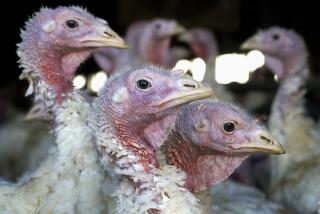Pasadena resident tests positive for whooping cough after visiting children’s museum

- Share via
A Pasadena resident has tested positive for whooping cough, a highly contagious respiratory illness that can be lethal in infants, after visiting the Kidspace Children’s Museum last week, authorities said.
The Pasadena Public Health Department announced the infection on Thursday as whooping cough cases continue to rise across the United States. There have been more than 8,470 cases reported nationally in 2025, which is about double the cases reported in the same time period last year, according to data from the U.S. Centers for Disease Control and Prevention.
Whooping cough — highly contagious and potentially dangerous — has surged in California to levels not seen since the start of the COVID-19 pandemic.
Health officials warned anyone who visited Kidspace from 1:30 p.m. to 5 p.m. on April 25 to monitor their household, and especially children, for symptoms such as a runny nose, a low-grade fever and difficulty breathing.
Anyone feeling ill after visiting the museum during this window is urged to visit their healthcare provider and avoid contact with babies and pregnant women. Infections can be confirmed with a nasal swab.
High-risk individuals, such as infants younger than 1 and pregnant women, may need preventive antibiotics even if they are not showing symptoms, health officials said.
Whooping cough is caused by a type of bacteria called Bordetella pertussis, which attack the upper respiratory system and can cause airways to swell, according to the CDC.
Symptoms typically begin five days to three weeks after exposure with a mild cold and a fever of less than 100.4 degrees. In severe cases, symptoms will progress to coughing fits that cause gasping or whooping sounds and vomiting. Infants may not display the telltale whooping cough, but turn blue, red or gag due to difficulty breathing.
California whooping cough cases more than quadrupled last year — from 644 in 2023 to 2,753 in 2024, according to the state health department. In the past six months, two babies in Louisiana and a 5-year-old in Washington have died from the illness.
Los Angeles County has its first confirmed case of the measles amid a growing number of cases in the United States.
There are vaccines for whooping cough. As early as 2 months old, babies get the first in a series of DTaP shots, which also protects against diphtheria and tetanus. The vaccine is administered again at 4 months, 6 months and then again at 15 to 18 months and when the child is between 4 and 6 years old.
The vaccine series is part of school-entry immunization requirements in all 50 states, and a booster shot is recommended for pregnant women.
Experts attribute the uptick in infections to decreasing vaccination rates. Last year, the share of children with exemptions to school-entry vaccinations across the country hit an all-time high of 3.3%, according to the CDC.
“There’s unfortunately been increasing anti-vaccine sentiment in the United States,” Dr. Ericka Hayes, who works at the Children’s Hospital of Philadelphia, told the Associated Press. “Our recovery is not nearly as quick as we expected it to be and we needed it to be. And again, when you fall below 95% for vaccinations, you lose that herd immunity protection.”
The Associated Press contributed to this report.
More to Read
Sign up for Essential California
The most important California stories and recommendations in your inbox every morning.
You may occasionally receive promotional content from the Los Angeles Times.













